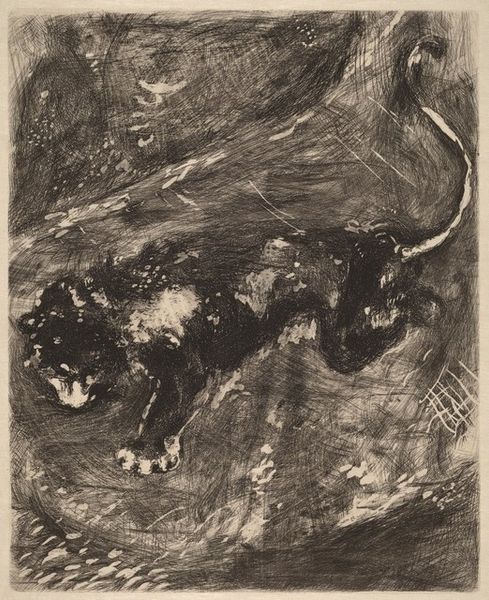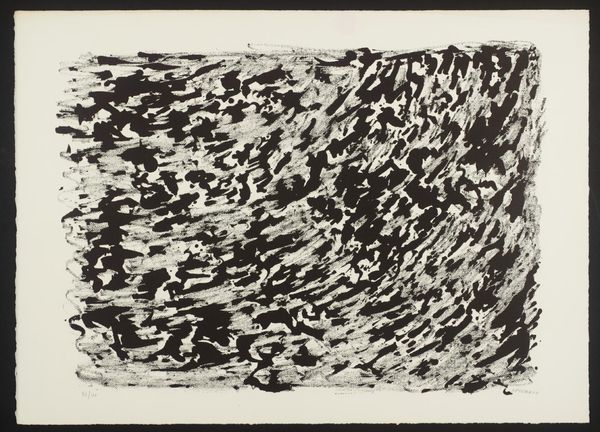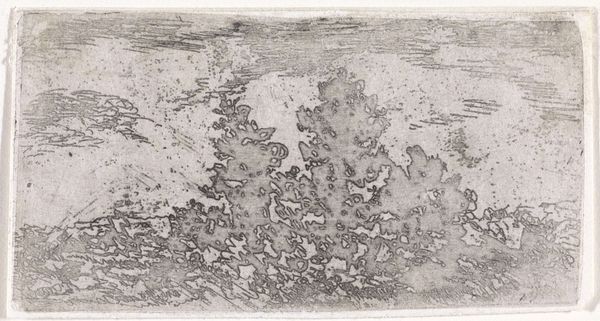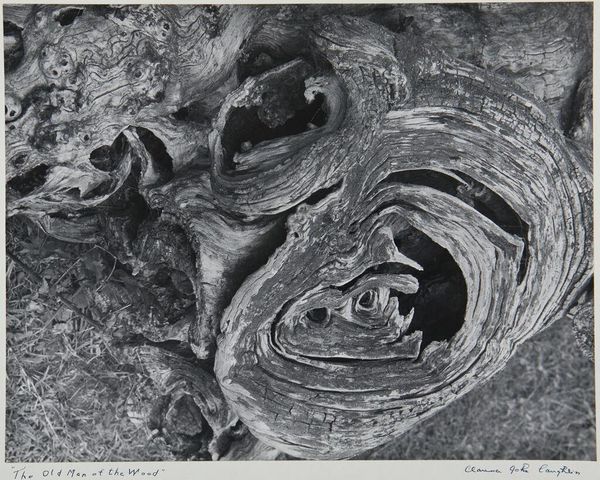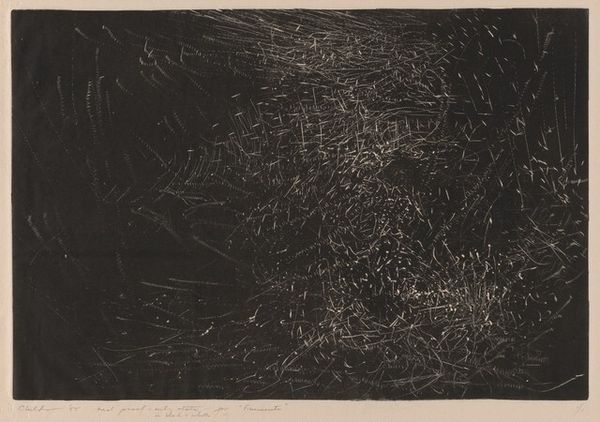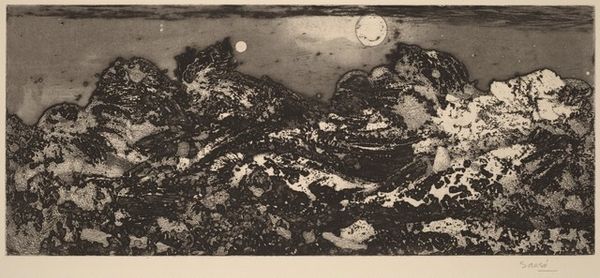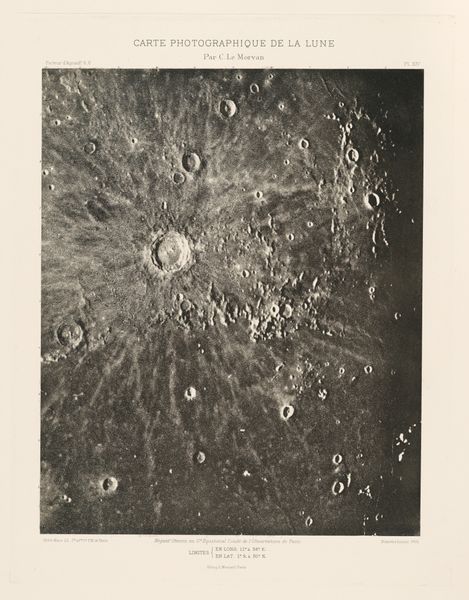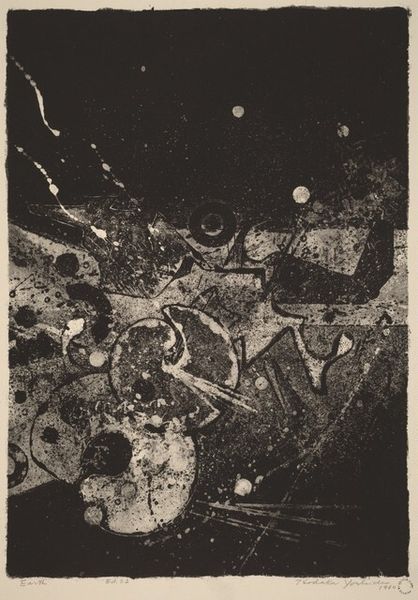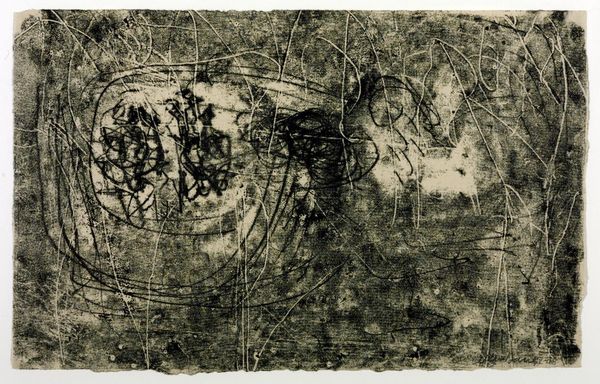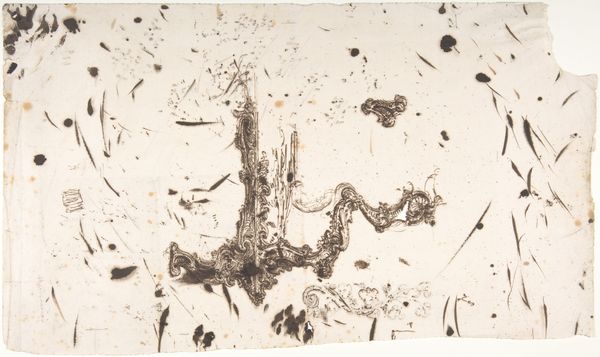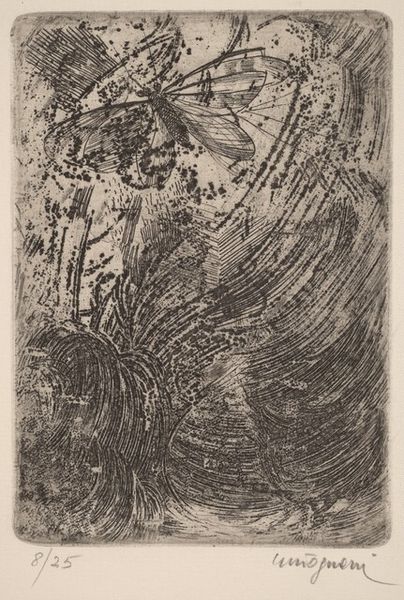
print, etching, graphite
#
abstract-expressionism
#
organic
# print
#
etching
#
abstraction
#
graphite
#
monochrome
Copyright: National Gallery of Art: CC0 1.0
Editor: Irwin Hollander's "Vesta," from 1962, is a fascinating dance of graphite and etching. It's a monochrome print that feels… primal, almost volcanic in its energy. What do you see in this piece? Curator: Oh, "Vesta," isn’t it bewitching? For me, it whispers stories of creation and destruction. The texture itself feels almost geological, doesn't it? I feel as though I'm peering at the surface of a newly formed planet. And the way the light seems to emerge from the darkness? That's the human spirit refusing to be extinguished. I find it comforting. What about the title “Vesta”, a Roman goddess of hearth and home, how do you see the connection to hearth or home, if at all? Editor: Hmm, interesting. I hadn't thought about the "hearth" aspect. Maybe the explosive imagery is less about destruction and more about the intense heat and energy needed for any kind of transformation or birth, the origin of the home. Curator: Precisely! It’s like gazing into the core of being. Consider how the Abstract Expressionists grappled with portraying the intangible, using line and form to evoke raw emotion. I think "Vesta" fits neatly into this pursuit, yes? Editor: Absolutely. The lack of clear forms really lets you project your own feelings onto it. Is there a sense of catharsis, of emotional purging, in Hollander's technique itself? Curator: Oh, without a doubt. It's like watching someone wrestling with demons, but instead of words, they're using graphite. And the finished product? It’s not just a picture. It's a testament to the act of overcoming. Like he transformed torment into art. It’s truly transformative. Editor: I came in seeing it as raw and almost violent, but I leave seeing the possibility and transformation beneath the surface, thanks to you. Curator: Exactly, and thanks to Hollander for igniting the discussion.
Comments
No comments
Be the first to comment and join the conversation on the ultimate creative platform.
